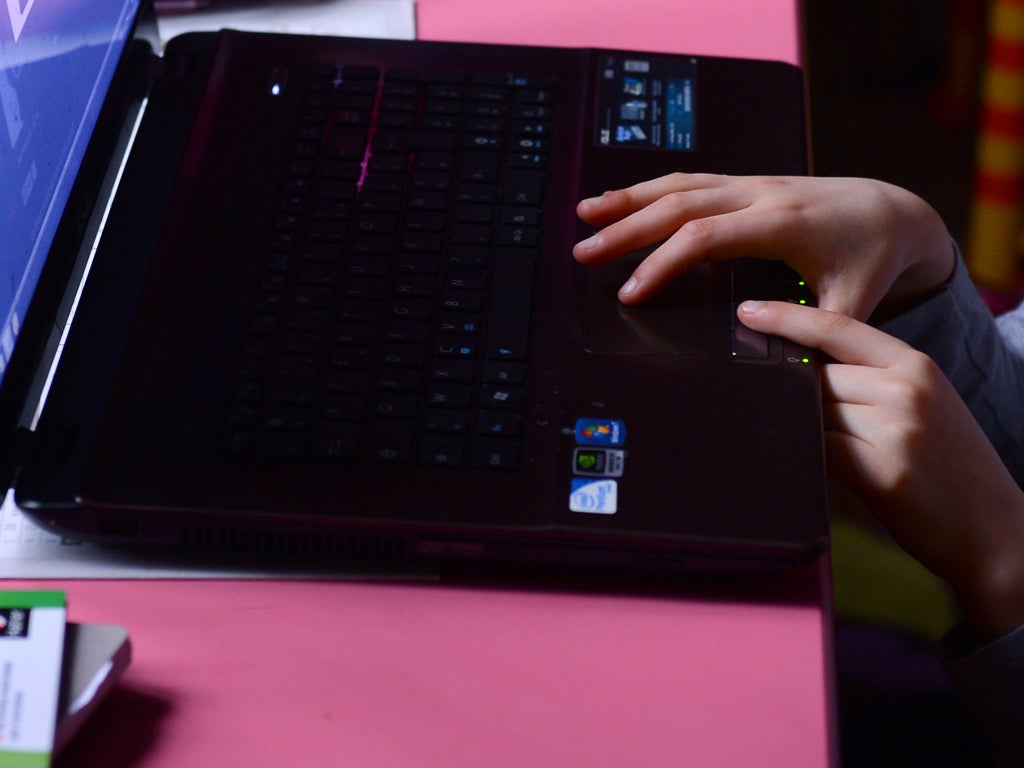Don't blame celebrities or pro-ana websites for the rise in eating disorders
More has to be done to work on prevention and early intervention of eating disorders – and that isn’t simply about banning websites

Your support helps us to tell the story
From reproductive rights to climate change to Big Tech, The Independent is on the ground when the story is developing. Whether it's investigating the financials of Elon Musk's pro-Trump PAC or producing our latest documentary, 'The A Word', which shines a light on the American women fighting for reproductive rights, we know how important it is to parse out the facts from the messaging.
At such a critical moment in US history, we need reporters on the ground. Your donation allows us to keep sending journalists to speak to both sides of the story.
The Independent is trusted by Americans across the entire political spectrum. And unlike many other quality news outlets, we choose not to lock Americans out of our reporting and analysis with paywalls. We believe quality journalism should be available to everyone, paid for by those who can afford it.
Your support makes all the difference.I am not ‘pro-ana’, far from it; but when it's blamed for the massive rise in the total number of people being treated for eating disorders, I will defend it.
‘Pro-anorexia’ websites are sickening; the result of a minority of people affected by eating disorders piling their obsession with food and weight loss onto vulnerable individuals. They share ‘tips and tricks’ of the depressing trade and serve to encourage the existing element of fierce competition. Then there are the pictures, or ‘thinspiration’. We’re aware of what these look like – images of dead-eyed catwalk models, a stack of ribs in spotlights, or emaciated young women contorted and stretched to show off their spines like prize xylophones.
We've seen these images, but we certainly haven’t all developed a fascination with them through ‘pro-ana’ websites.
More than 6,500 children and teenagers were treated in hospital in 2010/11 – 150 of those aged nine or under - for conditions such as anorexia, compared with 1,718, in 2007/8. These figures have been revealed amidst growing worries that there is not enough treatment for those with eating disorders and, for those who are lucky enough to access treatment, the waiting times are often so long that conditions deteriorate rapidly, resulting in longer, more costly hospital stays. Many are turned away, told that their BMI isn’t low enough – with a mental illness which instils the belief that you're never thin enough, you're worthless, this kind of ‘treatment’ only serves to feed into that belief, worsening the illness both mentally and physically.
More has to be done to work on prevention and early intervention of eating disorders – and that isn’t simply about banning websites.
Some reports on these figures blame ‘pro-ana’ websites and celebrity culture, but those publications are the ones that re-post these dangerous images, that include graphic detail of how their case studies got to their lowest weight, that obsess over the most extreme cases of anorexia, all of which read like a how-to guide, and they incessantly analyse images of bikini-clad celebrities. Too thin, too fat, pouring curves, containing curves… We're bombarded much more intensely, on a much more regular basis not by 'pro-ana', but by publications that hypocritically blame eating disorders on anything but themselves.
My anorexia began at seven, and I continued to find new, inventive ways to dispose of my food without people noticing. It’s clear through my 20 years of eating disorders, that my illness had nothing to do with celebrity culture or the internet. In hospital, the majority of patients disagreed that the media and fashion worlds played a part in their eating disorders.
During my illness, I was far too wrapped up in my own world of starvation to notice what was going on around me, but through recovery, I became aware that ‘normal’ people seemed increasingly worried about what they were allowing to pass their lips. Impressionable children and teens were being taught what's 'good', 'bad' and 'naughty'. People were being judged on food choices. Calories were inescapable; on packaging and scrawled across restaurant menus, taking any element of fun or enjoyment out of eating out. There's constant analysis and judgement of everything we eat and that is more catching than we might think. Good health and nutrition is important – but that shouldn’t ever induce feelings of guilt for daring to indulge in pudding.
Young people absorb and echo the beliefs and behaviours that exist around them, but rather than blaming the Rihannas and Delevignes, we should look closer to home. It’s the way that families and friends talk about food and weight which will have the biggest impact on shaping the way they think and act around food. 'Good' and 'bad' need to be replaced with 'balance' and 'enjoyment'.
Eating disorders develop through complex combinations of factors and pressures which differ from person to person. The fact that so many young people are now requiring hospital treatment proves that not enough is being done to pick up on these illnesses early enough; even more education, awareness and understanding is needed at every level.
We need to stop scapegoating and start taking responsibility. There are no easy solutions to the seemingly unstoppable rise in cases of eating disorders, but if one thing is true, we need to look closer to home than Hollywood to find the answers.
Join our commenting forum
Join thought-provoking conversations, follow other Independent readers and see their replies
Comments